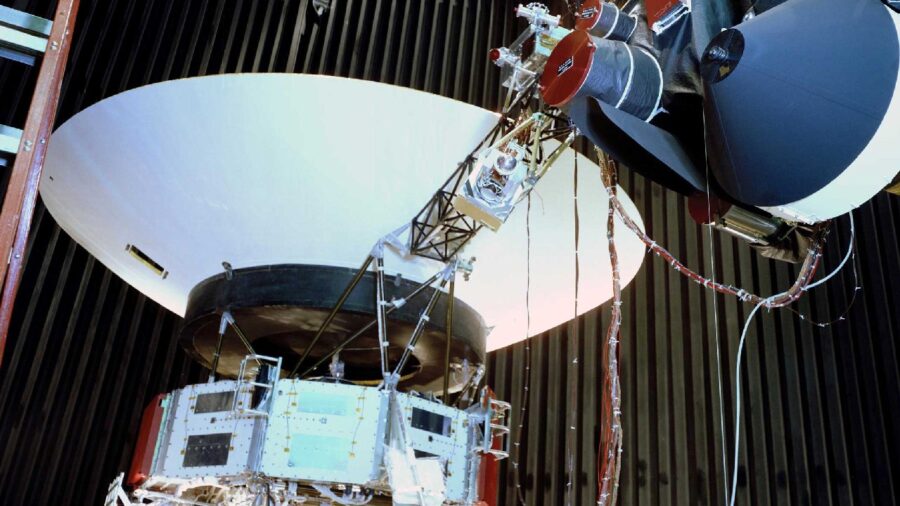Voyager 1 Sends Signal to Earth in Amazing Transmitter Return

Posted by Becca Lewis | Published
In a remarkable recovery, Voyager 1 called home using its backup radio for the first time since 1981. The interstellar craft went into power-saving protection mode on October 16, following an order from NASA’s Deep Space Network to turn on one of its heaters. . When Voyager didn’t respond, rescue efforts were made to communicate with one of only two spacecraft to break out of our solar system and explore space beyond our home system.
Lost Contact With Voyager-1
The Voyager mission flight team was notified of a problem when the signal they sent through NASA’s deep space antenna system failed to produce the effect Voyager had been looking for. At first, the team feared they had lost contact with the research vessel, but discovered that Voyager had turned on its low-power S-band radio. The first, X-band radio appears to shut down automatically as part of Voyager’s fail-safe system to prevent power supply problems.
Once communication was restored, scientists began trying to determine the cause of Voyager 1’s switch. Once they realized that the X-band radio was causing Voyager 1 to trigger its anti-fault system, the flight crew became reluctant to send a signal to it using that radio for fear of damaging the spacecraft. The S-band radio is not as powerful as the main X-band radio, but the team was able to send a backup command in the meantime.
Voyager-1 May Be Damaged

Before the first radio cutoff on Voyager 1, it is believed that the anti-error system was activated twice. Although Voyager 1 is believed to have more than enough power to operate its X-band radio, the shutdown suggests there may be damage to the craft. Over the next few weeks, researchers will process the data to try to find the source of the error and return Voyager 1 to full communication with Earth from space.
Voyager 1’s communications system suffered a unique glitch earlier this year that caused garbled gibberish to be transmitted instead of interpretable data. The problem was caused by a damaged part of Voyager 1’s control computer, and the flight crew was able to do a remarkable job of remotely retrieving Voyager 1’s computer, restoring communication with the ship. The fix took engineers several days to complete, as the signal delay between Voyager 1 and Earth was about two full days.
Decades of Deep Space Exploration
Both Voyager 1 and 2 were launched from Earth in 1977, and reached interstellar space with Voyager 1 leaving our solar system first in 2012 and Voyager 2 following close behind in 2016. of our solar system and are still collecting valuable data 43 years after launch. The Voyager interstellar mission remains humanity’s only communication instrument in interstellar space, sending data back to Earth from more than 15 million miles away.
Although Voyager remains an important target for interstellar research, its age is beginning to show signs of wear and tear. Space is an unforgiving place, and Voyager 1 has been around for 43 years. Although communication problems have been a recurring problem for the spacecraft, the hope is that the spacecraft will continue broadcasting, giving humanity an insight into the vast expanse of space where our little galaxy resides.
Source link



![Married Early: Madison Myers Shut Down by Allen’s Broccoli Briefs – Recap [S18E04] Married Early: Madison Myers Shut Down by Allen’s Broccoli Briefs – Recap [S18E04]](https://i0.wp.com/eadn-wc01-4272485.nxedge.io/wp-content/uploads/2024/11/married-at-first-sight-madison-myers-3446.jpg?w=390&resize=390,220&ssl=1)